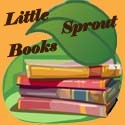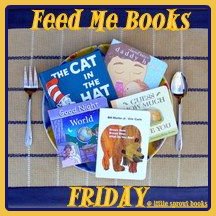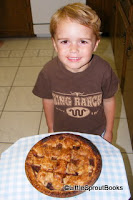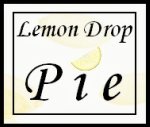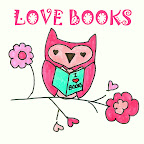Two Apple Projects, One Apple Book, and a Gift
Between Back-to-School season and the arrival of harvest time, it seems apples are in abundance in the stores as well as the blogosphere. See in particular, Little Page Turners and Welcome to our Wonderland. B had an apple project to complete for his first day of preschool, so, inspired by all the apple reading and crafting going on in my Google reader, I pulled out a story I’d been holding on to for fall to get us in an apple-y mood.
Reading about Apples, Cooking, Geography


I am a baking hobbyist, so when I saw the title of How to Make an Apple Pie and See the World , I was intrigued. The story begins with the premise that baking an apple pie is quite easy and requires just a few simple ingredients. However, an adventure ensues when the local market is closed and ingredients must be found elsewhere. The narrator advises the reader (who is represented in the illustrations by a young lady) that she should travel to Italy, Sri Lanka, and France, among other places to procure the best of each item required for baking. The last stop is Vermont for apples, followed by milling flour, churning butter, evaporating seawater for salt, and other not so simple tasks. Finally the pie is baked and ready to share with friends. A recipe for apple pie is included at the end, and maps of the journey decorate the front and back interior pages. There are so many opportunities for cognitive development in this book – following directions in a recipe, learning about food production, (wheat to flour, milk to butter, etc.) and learning about the world around us and local specialties. I’m excited to go find the sister book, How to Make a Cherry Pie and See the U.S.A.
, I was intrigued. The story begins with the premise that baking an apple pie is quite easy and requires just a few simple ingredients. However, an adventure ensues when the local market is closed and ingredients must be found elsewhere. The narrator advises the reader (who is represented in the illustrations by a young lady) that she should travel to Italy, Sri Lanka, and France, among other places to procure the best of each item required for baking. The last stop is Vermont for apples, followed by milling flour, churning butter, evaporating seawater for salt, and other not so simple tasks. Finally the pie is baked and ready to share with friends. A recipe for apple pie is included at the end, and maps of the journey decorate the front and back interior pages. There are so many opportunities for cognitive development in this book – following directions in a recipe, learning about food production, (wheat to flour, milk to butter, etc.) and learning about the world around us and local specialties. I’m excited to go find the sister book, How to Make a Cherry Pie and See the U.S.A. !
!
Apple Project #1
Using the super-simple and kid friendly recipe from How to Make an Apple Pie and See the World
 , B and I started on our pie project.
, B and I started on our pie project.

We measured and mixed the pastry (with our fingers – fun!).
Using pre-sliced organic apples from Costco was a shortcut – I peeled the slices, then he used his plastic “knife” to chop them into bite size pieces before mixing with cinnamon-sugar.
The pie was filled and baked, and we shared it with our friends: Grandma, Papa, and Great-Grandma (on grandparents’ day)!
Apple Project #2
Feeling apple-y, we moved on to our second apple project, which was to be completed prior to B’s first day of preschool. At summer registration, each child was given an apple to decorate and bring to school to add to the class tree. The apples were about 6”x8” printed on glossy cardstock. B chose to use stickers to put his name on his apple, then added 4 red felt circles with brown stems and green leaves a la glitter glue. He also gave the apple a face with googley eyes and a yarn mouth.
The Gift



I’d seen mention of meet-the-teacher gifts on a couple blogs. I have to point out, I was never the recipient of a first-day gift in my teaching days, but I know middle school is different than preschool, so I did a little searching. I found plenty of crafts – some cheesy, some adorable, but few I had the time or energy for on the day before school started. (Yes, this was a last minute thought.) Then I found a post on  2CleverBlog about gifting a book to your teacher – right up our alley! The suggestion is that the child gives his teacher a book that connects to something he did over the summer, thereby introducing himself and connecting with the teacher. Perfect! I had recently picked up a copy of Planting a Rainbow after being introduced to it over at Red Ted Art! We checked it out from the library and enjoyed it enough to purchase, so it turned into our teacher gift and I’ll purchase another copy for B and T to remember our summer garden. B’s teacher was pleased by the gift (and his note) and B had a fantastic first day.
2CleverBlog about gifting a book to your teacher – right up our alley! The suggestion is that the child gives his teacher a book that connects to something he did over the summer, thereby introducing himself and connecting with the teacher. Perfect! I had recently picked up a copy of Planting a Rainbow after being introduced to it over at Red Ted Art! We checked it out from the library and enjoyed it enough to purchase, so it turned into our teacher gift and I’ll purchase another copy for B and T to remember our summer garden. B’s teacher was pleased by the gift (and his note) and B had a fantastic first day.

How To Make an Apple Pie and See the World  is appropriate for preschoolers, primary grades.
is appropriate for preschoolers, primary grades.
Come Play at the We Play link up!
I’m also linking up with the Book Lover’s Blog Hop at Story Time Under the Stars and
The Back to School Link Party at ABC and 123
Come back to Little Sprout Books on Friday for Feed Me Books Friday!
 Read more...
Read more...


